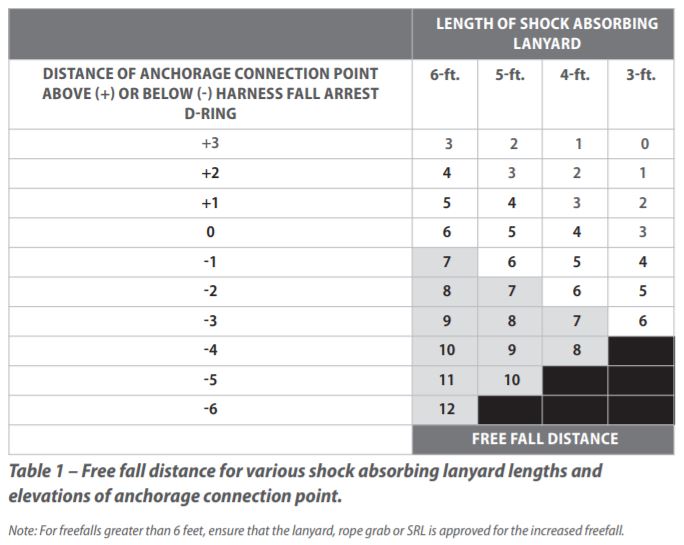Courtesy of MSA, provided below is the information you need to accurately calculate total fall distance.
You have just received your new full body harness, 6-ft. shock-absorbing lanyard and anchorage connector. A structural engineer qualified all of your anchor points to ensure that they meet strength requirements per OSHA regulations. Is your personal fall arrest system complete? Perhaps not.
If you have not determined available clearance below the working surface and calculated your total fall distance (TFD) properly, it may still be possible to be seriously or fatally injured in the event of a fall.
Knowing how to calculate total fall distance is just as critical as selecting the proper harness, lanyard, anchorage connector, and anchorage point for your specific application. Total fall distance is defined as the sum of freefall distance (FFD), deceleration distance (DD), harness effects (HEFF), and vertical elongation (VEL). It is also wise to include a safety factor (SF) of at least 2-ft. in the formula.

















